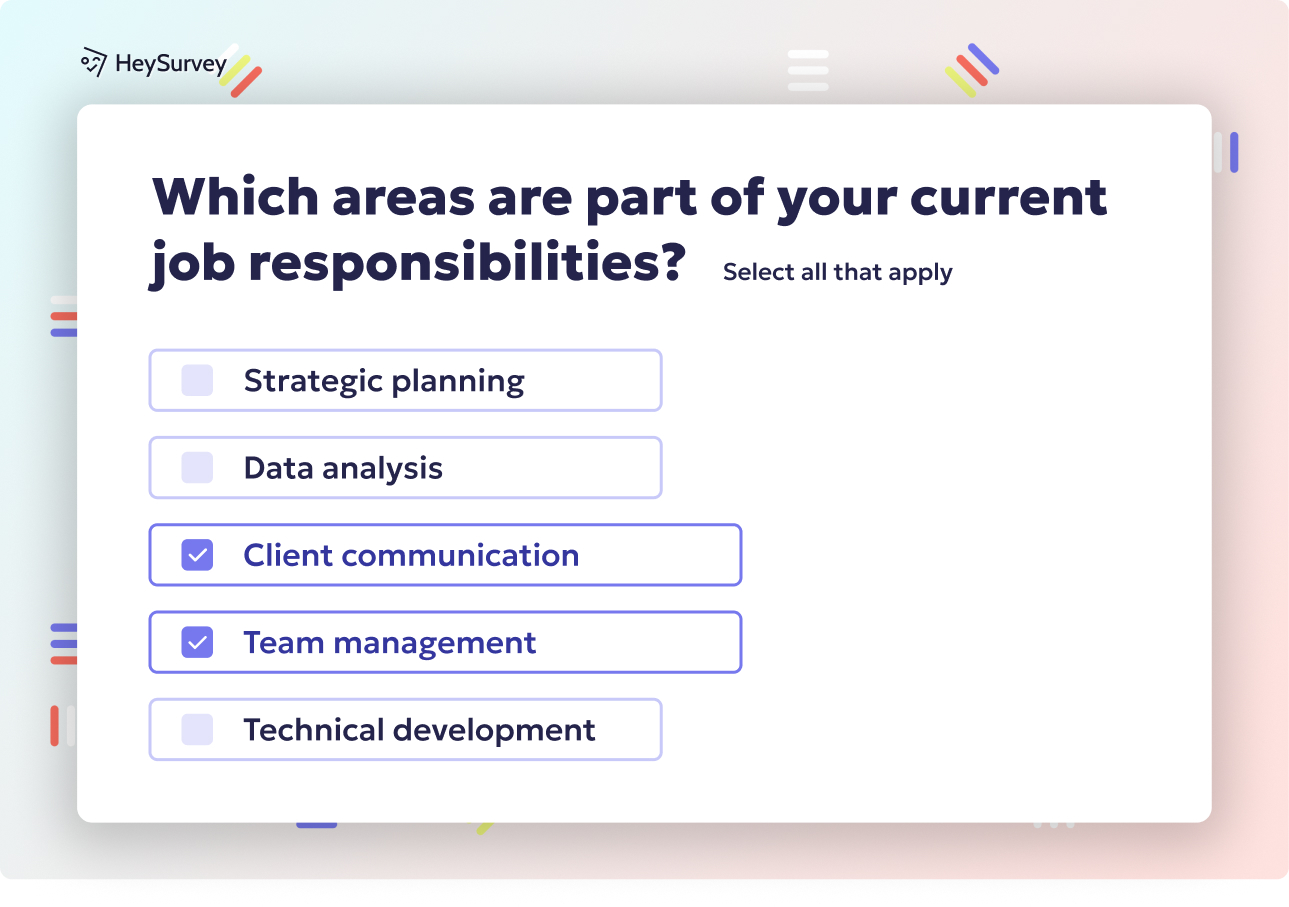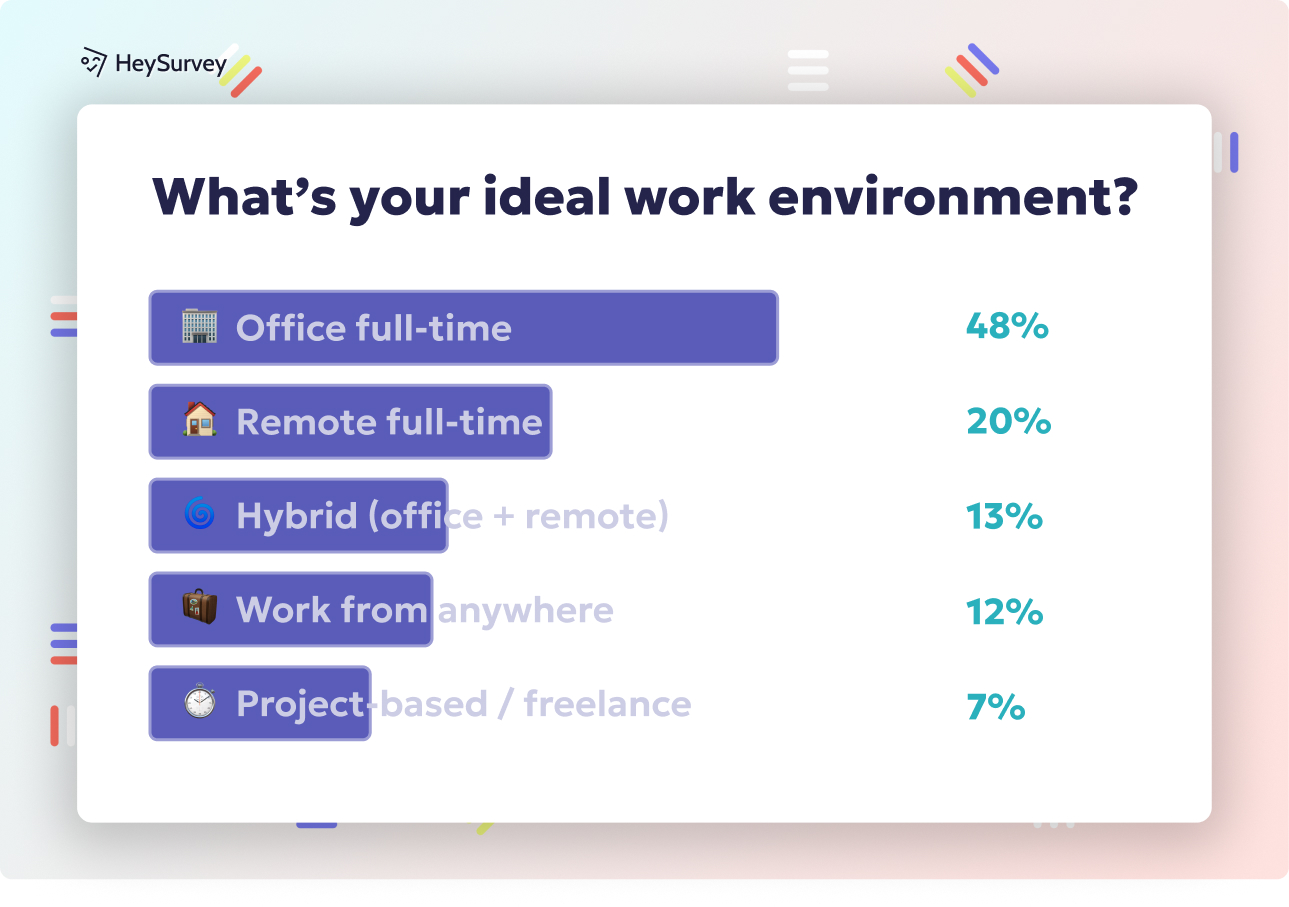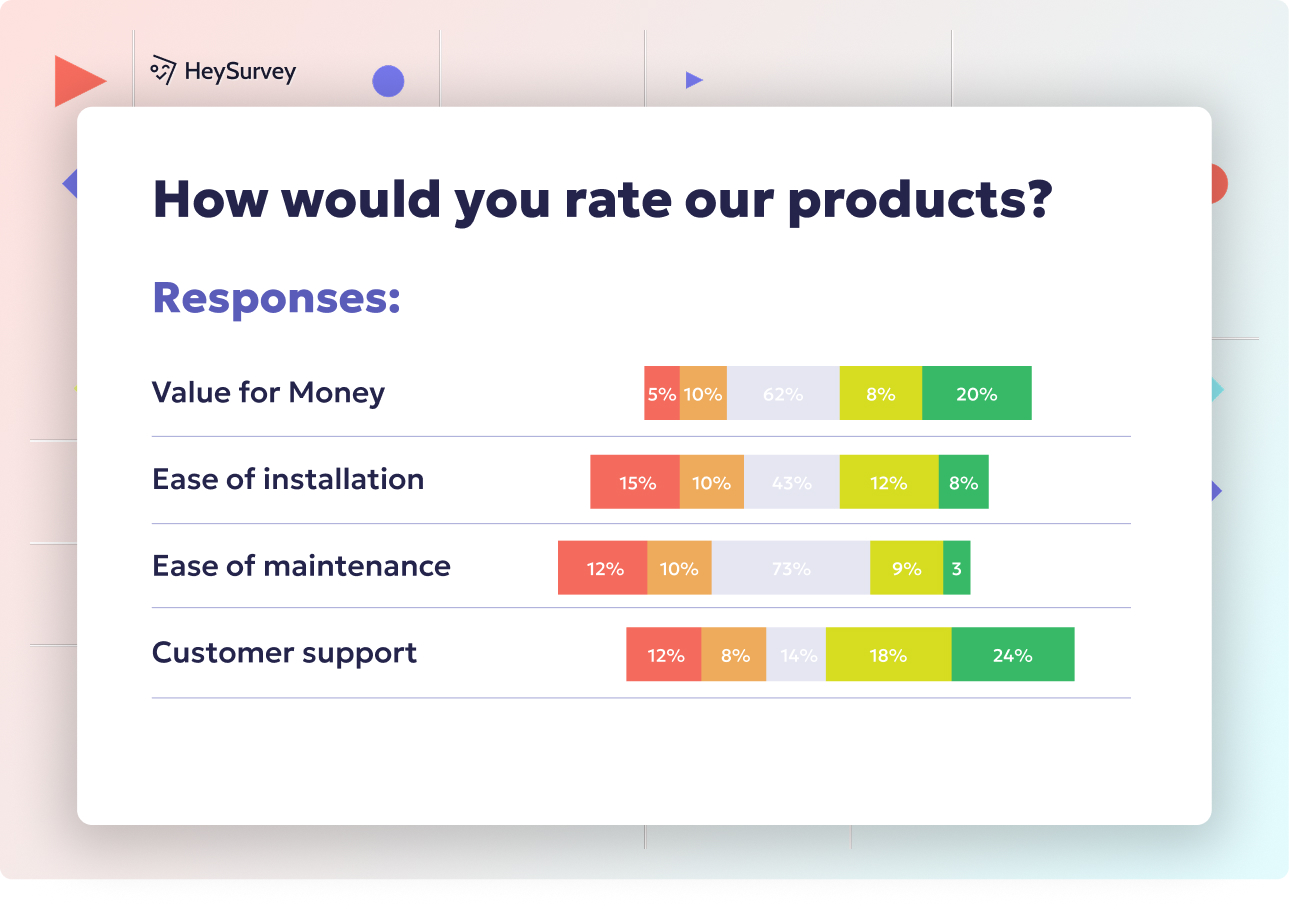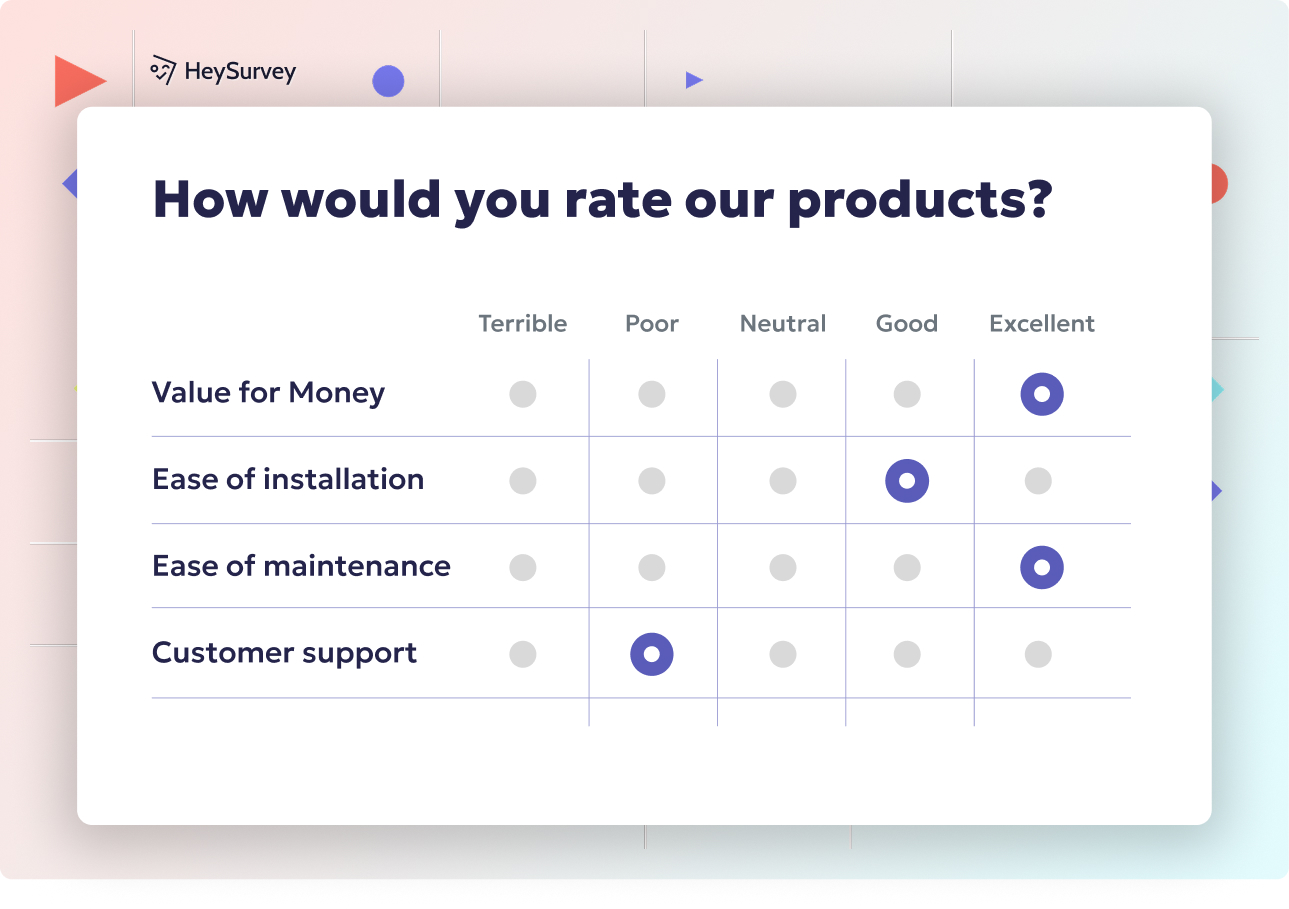25 Poverty Survey Questions for Measuring Household Poverty Effectively
Explore a comprehensive guide with over 35 poverty survey questions covering demographics, income, services, assets, food security, and more.
Introduction
Poverty surveys are essential tools for understanding the multifaceted nature of poverty. By asking the right questions, these surveys uncover root causes, inform social programs, and track progress toward Sustainable Development Goals. Deploying well-crafted poverty survey questions during baseline assessments, program evaluations, post-disaster relief, and national poverty mapping ensures that interventions are both effective and targeted.
Household Demographics Survey
Purpose/Description
Capturing basic characteristics such as age, gender, household size, and dependency ratio is crucial, as these factors correlate strongly with poverty levels.
Why & When to Use
- Determine eligibility for social protection schemes: Understanding household demographics helps identify those who qualify for assistance programs.
- Segment poverty data by demographic groups for targeted interventions: Tailoring programs to specific groups ensures resources are allocated efficiently.
5 Sample Questions
- How many people currently live in this household, including yourself?
- What is the age of each household member?
- What is the highest level of education completed by the household head?
- How many children under five years old live in the household?
- Is any household member living with a disability? (Yes/No)
Single-parent households, particularly those headed by single mothers, are significantly more likely to experience poverty, with 30.6% of such families living below the poverty line compared to 6.2% of married-couple families. (en.wikipedia.org)

Creating your poverty survey questions with HeySurvey is a breeze—even if you’re new to the platform! Follow these 3 easy steps to get your survey up and running quickly, plus a few bonus tips to make it shine.
Step 1: Create a New Survey
Head over to HeySurvey’s dashboard and click Create Survey. You have the option to start from scratch by selecting an Empty Sheet or save time by picking a pre-built template that fits poverty assessments perfectly. Once you select your starting point, give your survey a clear internal name so you can find it easily later.
Step 2: Add Questions
Click the Add Question button to input your poverty-related queries—such as those on household demographics, income, or access to basic services. Choose from various question types including text inputs, multiple-choice, or scales to best capture your data. Don’t forget you can make questions required to ensure respondents don’t skip important info!
Step 3: Publish Survey
When you’re happy with your questions and design, hit Publish. You’ll need to create a free account if you haven’t yet, which allows you to share your survey link and collect responses. Your survey is now live and ready to start gathering actionable data on poverty conditions.
Bonus Step 4: Apply Branding
Make your survey stand out by adding your organization’s logo and customizing colors, fonts, and backgrounds via the Designer Sidebar. A branded survey builds trust and professionalism among respondents.
Bonus Step 5: Define Settings or Skip Logic
Use the Settings Panel to schedule survey start/end dates, limit responses, or redirect users after completion. Want a smarter survey? Set up branching or skip logic to tailor questions based on respondents’ answers—valuable for nuanced poverty indicators surveys.
Ready to dive in? Start building your poverty survey with HeySurvey’s ready-made poverty survey template and make your research effortless and effective!
Income & Employment Survey
Purpose/Description
This survey quantifies cash inflows and labor dynamics, directly affecting a household's poverty status.
Why & When to Use
- Gauge income poverty thresholds and employment vulnerability: Assessing income levels and employment status helps identify those at risk.
- Identify the informal economy’s contribution to livelihoods: Understanding informal work provides a fuller picture of household income sources.
5 Sample Questions
- What was the household’s total income from all sources last month?
- How many household members held a paid job in the past seven days?
- What is the primary occupation of the main income earner?
- Did you engage in any informal or casual labor in the past 12 months? (Yes/No)
- Have you experienced job loss or reduced hours in the last six months?
Accurate measurement of household income and employment status is crucial for assessing poverty levels and informing effective policy interventions.
Access to Basic Services Survey
Purpose/Description
Measures accessibility and quality of essential services like water, sanitation, healthcare, and electricity.
Why & When to Use
- Map service gaps to prioritize infrastructure investment: Identifying areas lacking services directs where improvements are needed.
- Assess multidimensional poverty beyond income: Access to services is a key component of overall well-being.
5 Sample Questions
- What is the main source of drinking water for your household?
- How long does it take to reach the nearest health facility?
- Does your household have access to a functional toilet? (Yes/No)
- How many hours per day is electricity available in your home?
- In the past 12 months, did any child in the household miss school due to lack of sanitary facilities?
Asset Ownership Survey
Purpose/Description
Evaluates durable and productive assets that buffer households against economic shocks.
Why & When to Use
- Identify wealth distribution and resilience capacity: Understanding asset ownership reveals economic stability.
- Complement income data for a more holistic poverty index: Assets provide additional insight into financial well-being.
5 Sample Questions
- Does your household own or rent this dwelling?
- How many acres of land does your household own or cultivate?
- List the livestock owned by your household (e.g., cattle, goats, poultry).
- Does any household member own a mobile phone? (Yes/No)
- Do you own any agricultural machinery such as a tractor or plow? (Yes/No)
Individual-level multidimensional poverty measures reveal significant gender disparities in poverty that household-level analyses often overlook. (arxiv.org)
Food Security Survey
Purpose/Description
Detects hunger, malnutrition risk, and seasonal food shortages.
Why & When to Use
- Monitor emergency relief effectiveness: Assessing food security helps evaluate aid programs.
- Track households’ ability to meet caloric needs year-round: Understanding food access is vital for long-term planning.
5 Sample Questions
- In the past 30 days, how often did your household skip meals due to lack of food?
- How many meals per day does the household usually consume?
- Did any household member go to bed hungry in the past week? (Yes/No)
- What coping strategies do you use when food is scarce (e.g., borrowing, reducing portions)?
- Has household food expenditure increased, decreased, or remained the same over the last six months?
Financial Inclusion & Savings Survey
Purpose/Description
Assesses access to banking, credit, and informal savings, which influence poverty escape paths.
Why & When to Use
- Design microfinance and digital payment interventions: Understanding financial inclusion aids in creating effective programs.
- Identify financial barriers that perpetuate poverty cycles: Addressing these barriers is key to breaking the poverty cycle.
5 Sample Questions
- Do you have an account with a formal financial institution? (Yes/No)
- Have you taken any loan (formal or informal) in the past 12 months?
- Do you regularly save money? If yes, where do you save?
- Have you used mobile money services in the last three months? (Yes/No)
- What prevents you from accessing formal banking services?
Perceived Well-Being & Subjective Poverty Survey
Purpose/Description
Captures self-reported poverty perception and life satisfaction, complementing objective metrics.
Why & When to Use
- Understand psychological dimensions of poverty that numbers may miss: Perception data adds depth to poverty analysis.
- Align program outcomes with community definitions of “living well”: Ensures programs meet community needs.
5 Sample Questions
- On a scale of 1–10, how would you rate your household’s overall well-being?
- Do you consider your household to be poor, non-poor, or somewhere in between?
- Compared with five years ago, is your household better off, worse off, or about the same?
- What three things would most improve your family’s quality of life?
- How often do you feel worried about not meeting basic needs? (Never/Rarely/Sometimes/Often/Always)
Best Practices & Dos and Don’ts for Crafting Poverty Survey Questions
- Ensure cultural sensitivity: Pre-test translations and avoid stigmatizing language.
- Maintain question order: Begin with non-intrusive demographics, proceed to sensitive income queries.
- Use clear, specific recall periods: For example, “past 30 days” rather than “recently.”
- Combine objective and subjective indicators: For multidimensional insights.
- Don’t overload respondents: Keep surveys under 45 minutes.
- Do leverage digital data collection: For real-time validation and skip logic.
By thoughtfully designing poverty assessment tools and incorporating these best practices, researchers can gather comprehensive data that drives effective interventions and policies.
Related Demographic Survey Surveys

32 Questions About Homelessness: Essential Surveys to Understand Housing Insecurity
Explore 27 essential questions about homelessness across demographics, attitudes, needs, services...

30 Demographic Survey Questions for College Students Guide
Explore 35 essential demographic survey questions for college students covering identity, academi...

31 American Community Survey Questions: Types & Expert Tips
Explore 35 American Community Survey questions with types, sample items, and expert tips to maste...

